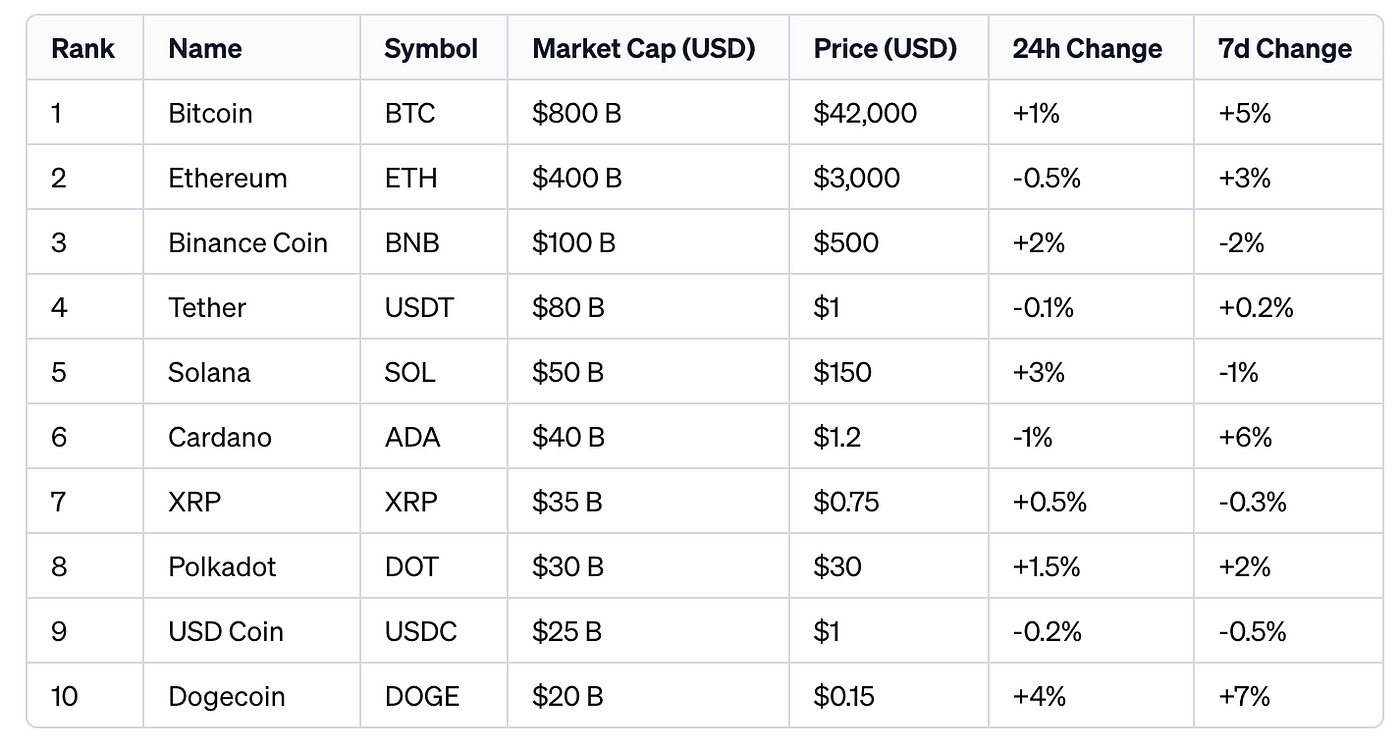10 Simple Strategies for Smart Financial Management
Get informed about financial management and learn 10 simple strategies to make smart decisions, create and use budgets, set financial goals, invest wisely, and manage debt effectively!

Are you feeling overwhelmed by your finances? Do you want to make smart decisions and have a secure future? If so, then this article is for you. Here, you'll find 10 simple strategies for smart financial management that will help you understand your finances, create and use budgets. set financial goals, invest wisely and manage debt effectively. By following the tips outlined in this article, you can be more informed and confident about your financial decisions. So what are you waiting for? Follow my newsletter today and start taking control of your finances!
Understand your finances
Understanding your finances is the first step to making smart financial decisions and having a secure future. Knowing what assets and liabilities you have, as well as their respective values, can help you make better decisions when it comes to investing and budgeting. Additionally, researching different financial products and services available can help you meet your needs more effectively.
For starters, understanding the difference between assets and liabilities is key to understanding your finances. Assets are generally anything that has a monetary value or something that can be converted into money; this includes items like stocks, bonds, property, etc. Liabilities are anything that represents money owed by an individual or business; this includes items like credit card debt, loans or mortgages.
The next step in the process of understanding your finances is learning the basics of financial planning. This involves setting short-term goals such as paying off debt or building up an emergency fund in addition to long-term goals such as retirement planning. By creating and sticking to a budget, you’ll be able to track where your money is going each month and make sure that it’s being used wisely. Additionally, researching different financial products and services available will help make sure that you’re getting the best deal for yourself financially.
Regarding investing, it’s important to know the taxes and fees associated with doing so. These fees vary depending on what type of investment product you choose; some investments may require transaction costs, while others may require annual maintenance fees or hidden charges like front-end loads or back-end loads which can add up quickly if not monitored carefully. Knowing these taxes and fees will help ensure that you understand what kind of return on investment (ROI) you should expect from any given investment product before committing any funds.
Finally, look for ways to reduce expenses and increase savings whenever possible. Simple things like cutting out unnecessary luxuries from your budget or taking advantage of discounts when shopping can go a long way towards reducing expenses over time. Additionally, try finding ways to increase income through side hustles, such as freelancing or selling unwanted items online - this extra income could then be put towards savings instead of additional spending!
By following these simple strategies for smart financial management outlined above - understanding assets & liabilities; learning about financial planning basics; researching different financial products & services available; knowing taxes & fees associated with investing; looking for ways to reduce expenses & increase savings - readers can be better informed about their finances, which will enable them to make smarter decisions moving forward into their future!
Create and use budgets
Financial planning is an important part of life that shouldn't be overlooked. Creating and using a budget, understanding the impact of inflation, and tracking your spending are all key steps to successful financial management. It's important to identify necessary expenses versus unnecessary ones to stay within budget and minimize overspending. Automating payments for bills such as insurance premiums or loan payments can also help ensure on-time payment without any late fees. Lastly, it's beneficial to maintain some flexibility in budgets so they can adjust when unanticipated events occur, like job loss or medical emergencies. Stocking away emergency funds is crucial for keeping out of debt during these trying times.
Set financial goals
Setting financial goals is an important step in smart financial management. By setting goals, you can create a plan for your finances and track your progress towards achieving those goals. Here are some tips to help you get started:
1. Identify and define short-term and long-term goals - Start by identifying both short-term and long-term financial goals. Short-term goals might include saving for a vacation or a car, while long-term goals could include retirement planning or paying off student loans.
2. Prioritize based on importance and urgency - Once you have identified your financial goals, prioritize them based on importance and urgency. For example, if one of your objectives is to save up for a down payment on a house, that should be a higher priority than saving up for a vacation in the near future.
3. Break down larger goals into smaller ones - Large financial objectives can be intimidating when looked at as one big goal. To make it easier to work towards them, break them down into smaller milestones that are more manageable and will give you something to celebrate along the way!
4. Set timelines - Setting timelines helps hold yourself accountable towards reaching your objectives faster. Creating deadlines will help keep you motivated so that you don't lose sight of what needs to be done and when it needs to be done in order to reach those milestones more quickly
5. Track progress regularly - Finally, tracking progress regularly is crucial to ensure that you stay on track with your financial objectives. Whether it’s manually tracking balances or setting up automated reminders in order to stay on top of payments. keeping an eye on where you stand financially will help achieve success sooner rather than later!
By following these strategies for setting financial goals, readers can ensure that they are making the most of their finances and working towards their long-term financial objectives with confidence!
Start investing
Investing is an essential part of any smart financial management strategy. It can help you meet your financial goals and grow your wealth over time. To get the most out of your investments, it is important to understand the different types of investments available and their associated risk-reward profiles.
Before investing in any asset class, make sure you have a good grasp on the basics of investing, such as understanding how markets work and knowing which investment products are best for your needs. Research potential investments thoroughly to ensure they are suitable for your financial goals and risk tolerance. Diversifying across asset classes and regularly rebalancing your portfolio are also important strategies for managing your investments.
When choosing which assets to invest in, it’s important to consider factors like liquidity, volatility, fees, taxes and other legal considerations that could impact returns. Different types of investments can include stocks, bonds, mutual funds, ETFs (exchange-traded funds), commodities such as gold or silver coins or futures contracts; real estate investment trusts (REITs), cryptocurrency such as Bitcoin or Ethereum, foreign exchange (forex) trading and more. Each type has its own risks and rewards profile, so research each carefully before making a decision about which one(s) to invest in.
It's also important to have an exit plan when investing - know when you plan to sell the asset based on whether it meets a set return target or if you need to liquidate quickly due to market changes or unforeseen events. Lastly, keep in mind that investing is not a get-rich quick scheme - it requires patience and discipline over time so that you can build long term wealth through compounding returns over time. By following these steps - researching potential investments thoroughly; diversifying across different asset classes; rebalancing regularly; setting an exit plan; being patient - readers can make informed decisions about their investments and better manage their financial future.
Manage debt wisely
Managing debt wisely is a key component of any smart financial management strategy. It’s important to know your risk tolerance when it comes to taking on debt and understand the terms and conditions of any loan before signing. Being knowledgeable about interest rates, repayment schedules, and other details can help you make more informed decisions when it comes to borrowing money.
Timeliness is also essential when it comes to repaying debts. Paying on time ensures that you don’t accrue extra fees or penalties. Furthermore, it helps you build a positive credit history by showing lenders that you are responsible for your payments. Regularly checking your credit score is also important in order to ensure that all information reported about you is accurate and up-to-date, as mistakes can affect your ability to borrow in the future.
Finally, if possible, try paying more than just the minimum payment each month in order to reduce your overall debt faster. This may require some sacrifices, such as cutting back on luxury items or nonessential spending; however, over time this will help improve financial stability and put you in a better position for long term success.
By following these strategies and making smart decisions when it comes to managing debt, readers can be better equipped to make sound financial decisions and work towards their goals for a brighter financial future.
FAQ
What is the meaning of smart finance?
Smart finance is the practice of making informed financial decisions that are in your best interest. It involves understanding your financial situation, setting goals, and creating a plan to achieve those goals. Smart finance can help you save money, reduce debt, and build wealth.
What are the 5 basic of financial management?
The 5 basic of financial management are:
- Budgeting: Creating a budget is the first step to getting your finances under control. It helps you track your income and expenses so you can see where your money is going.
- Saving: Saving money is important for achieving your financial goals, such as retirement or buying a home. There are many different ways to save money, such as opening a savings account or investing in stocks or bonds.
- Debt management: If you have debt, it is important to create a plan to pay it off. There are many different debt management strategies, such as debt consolidation or debt snowball.
- Investing: Investing is a way to grow your money over time. There are many different types of investments, such as stocks, bonds, and mutual funds.
- Risk management: Risk management is the process of protecting your financial assets from loss. There are many different ways to manage risk, such as insurance and diversification.
What is good financial management?
Good financial management is the practice of making sound financial decisions that are in your best interest over the long term. It involves understanding your financial situation, setting goals, and creating a plan to achieve those goals. Good financial management can help you achieve financial security and peace of mind.
What is this financial management?
Financial management is the process of planning, organizing, and controlling the financial resources of an individual, family, business, or other organization. It involves making decisions about how to use money to achieve specific goals.
What is an example of a smart financial plan?
A smart financial plan is one that is specific, measurable, achievable, relevant, and time-bound. For example, a smart financial goal for a young adult might be to save $10,000 for a down payment on a house within 5 years.
Which is an example of a smart financial goal?
A smart financial goal is one that is specific, measurable, achievable, relevant, and time-bound. For example, a smart financial goal for a young adult might be to save $10,000 for a down payment on a house within 5 years.
What are the 3 main goals of financial management?
The 3 main goals of financial management are:
- To meet current needs: This means having enough money to pay for your essential expenses, such as housing, food, and transportation.
- To achieve long-term goals: This could include saving for retirement, buying a home, or sending your children to college.
- To protect your assets: This means taking steps to protect your money from loss, such as through insurance and diversification.
What are the 4 processes of financial management?
The 4 processes of financial management are:
- Planning: This involves setting financial goals and developing a plan to achieve them.
- Organizing: This involves tracking your income and expenses, and creating a budget.
- Controlling: This involves monitoring your progress and making adjustments to your plan as needed.
- Reporting: This involves tracking your financial performance and reporting on it to your stakeholders.
What are financial management types?
There are many different types of financial management, including:
- Personal financial management: This is the process of managing the financial affairs of an individual or family.
- Business financial management: This is the process of managing the financial affairs of a business.
- Government financial management: This is the process of managing the financial affairs of a government.
- Non-profit financial management: This is the process of managing the financial affairs of a non-profit organization.
What are 5 smart goals examples?
5 smart goals examples are:
- To save $10,000 for a down payment on a house within 5 years.
- To pay off all debt within 3 years.
- To contribute 10% of my income to retirement savings each month.
- To start a business within 1 year.
- To lose 10 pounds within 6 months.




